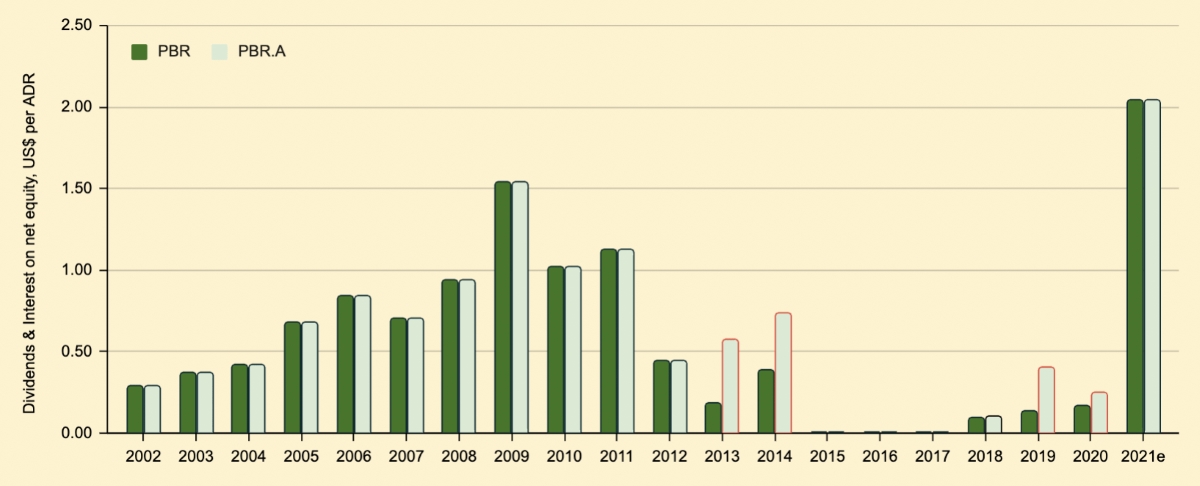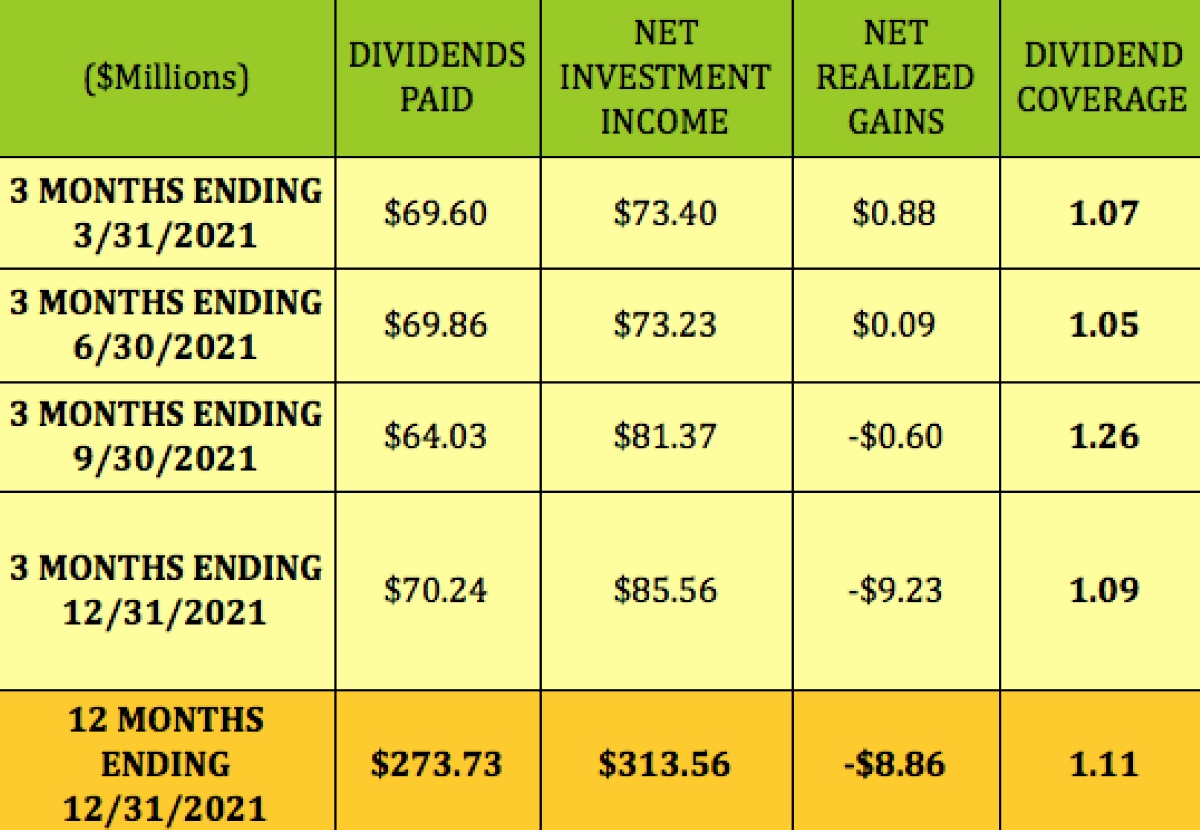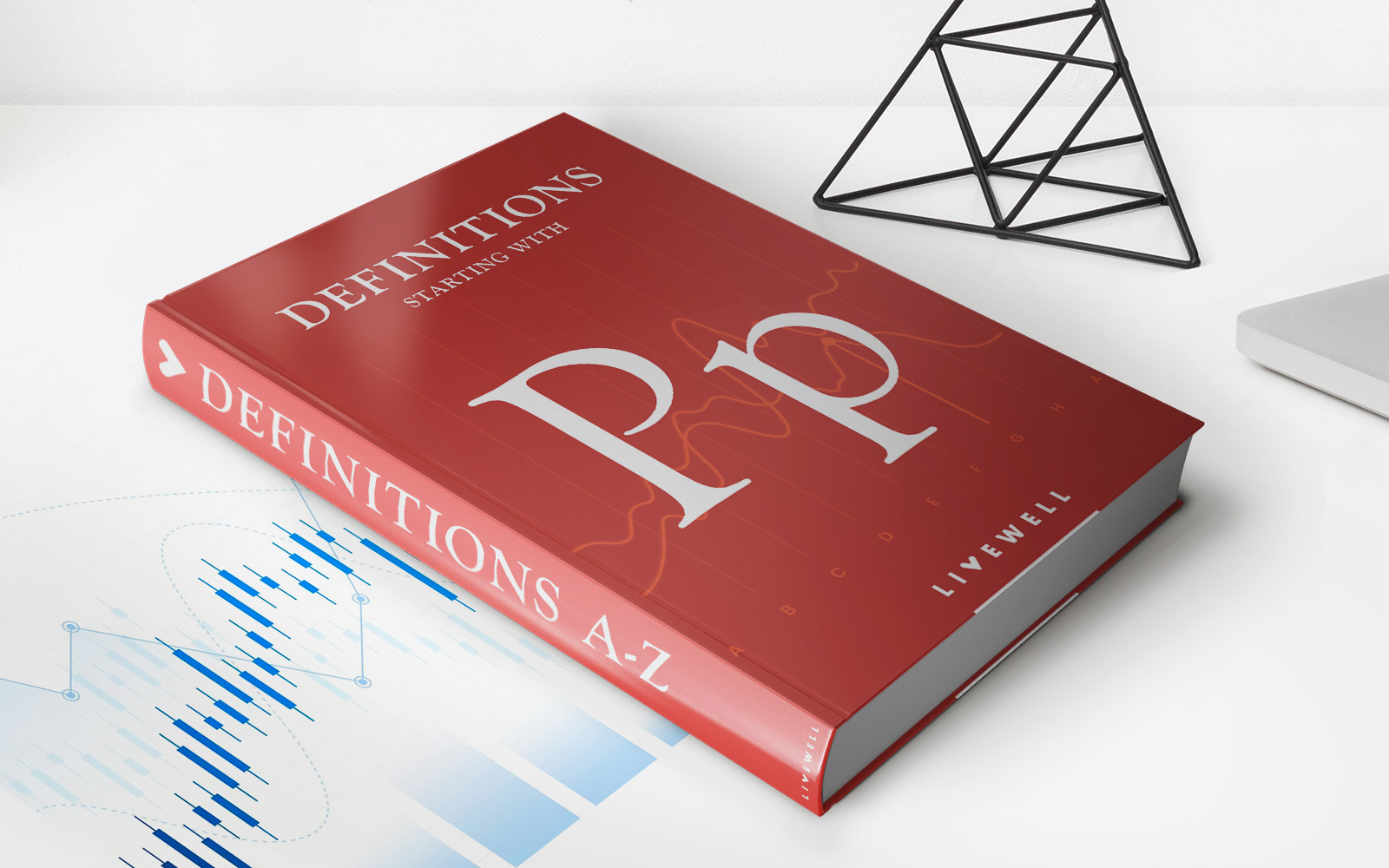

Finance
When Does SPHD Pay Dividends?
Published: January 2, 2024
Explore the dividend payment schedule for SPHD, a finance-focused ETF, and discover when you can expect to receive your dividends.
(Many of the links in this article redirect to a specific reviewed product. Your purchase of these products through affiliate links helps to generate commission for LiveWell, at no extra cost. Learn more)
Table of Contents
Introduction
When it comes to investing, dividends play a significant role in generating income for shareholders. Dividends are a portion of a company’s earnings that are distributed to its shareholders on a regular basis. They serve as a reward for investors who have committed their capital to the company’s growth and success.
One popular dividend-focused exchange-traded fund (ETF) is the Invesco S&P 500 High Dividend Low Volatility ETF (SPHD). This ETF seeks to provide investors with exposure to high dividend-yielding stocks while also mitigating volatility. Understanding when SPHD pays dividends is crucial for investors looking to capitalize on these income-generating opportunities.
In this article, we will delve into the world of SPHD dividends, exploring their frequency, distribution timeline, and the factors that can affect dividend payments. By the end, you’ll have a better understanding of when to expect dividend payments from SPHD and how to plan your investment strategy accordingly.
What is SPHD?
The Invesco S&P 500 High Dividend Low Volatility ETF (SPHD) is a popular investment fund that focuses on providing investors with exposure to high dividend-yielding stocks. As an ETF, SPHD is designed to track the performance of the S&P 500 Low Volatility High Dividend Index, which consists of 50 stocks within the S&P 500 Index that have historically demonstrated both high dividend yields and low volatility.
The ETF aims to achieve its investment objective by using a dividend yield weighting methodology, which means that stocks with higher dividend yields receive a higher weighting within the fund. This strategy allows the ETF to prioritize stocks that offer attractive dividend income potential while also seeking to minimize exposure to market volatility.
The selection process for SPHD’s holdings is based on certain criteria, including the dividend yield, the number of consecutive years of dividend growth, and the stock’s volatility compared to the broader market. By focusing on stocks with a track record of dividend growth and lower price volatility, SPHD aims to provide investors with stable income streams and potentially outperform the overall market. The fund is passively managed, meaning that it seeks to replicate the performance of its underlying index rather than actively selecting and managing individual stocks.
Investing in SPHD offers several advantages for income-seeking investors. Firstly, the ETF provides diversification through its exposure to 50 different stocks, reducing the risk associated with investing in a single company. Additionally, SPHD offers the convenience and flexibility of trading on a stock exchange, allowing investors to easily buy or sell shares throughout the trading day.
It’s important to note that, like any investment, SPHD carries risks. The fund’s performance can fluctuate based on various factors, including changes in interest rates, market conditions, and the performance of the underlying stocks. Investors should carefully assess their own risk tolerance and financial goals before investing in SPHD or any other ETF.
Dividends and SPHD
Dividends are a crucial component of total return for investors, especially those seeking income from their investments. When it comes to SPHD, dividends play a significant role in attracting investors, as the fund focuses on high dividend-yielding stocks. Understanding how dividends work in the context of SPHD is essential for potential investors.
SPHD aims to provide investors with regular dividend income by investing in stocks that have a history of paying consistent dividends. The fund’s strategy revolves around selecting stocks with high dividend yields, which are calculated by dividing the annual dividend per share by the stock’s price.
By investing in SPHD, investors become eligible to receive their share of the dividends that the fund receives from its underlying stocks. These dividends are typically paid out on a regular basis, providing investors with a reliable stream of income. The amount of dividends received depends on the number of shares an investor holds in the fund and the dividend yield of the underlying stocks.
One of the advantages of investing in SPHD is the potential for higher dividends compared to the broader market. The fund’s focus on high dividend-yielding stocks aims to generate a higher yield for investors, making it an attractive option for those seeking income-generating investments. However, it’s important to note that dividend payments can vary over time based on the performance of the underlying stocks and market conditions.
Another factor to consider when it comes to dividends and SPHD is dividend reinvestment. Dividend reinvestment allows investors to automatically reinvest their dividend payments back into the fund, purchasing additional shares. This can potentially accelerate the growth of an investment over time, as it harnesses the power of compounding.
Dividends are an important consideration for investors looking to generate income from their investments. By investing in SPHD, investors have the opportunity to earn regular dividend income from a portfolio of high dividend-yielding stocks. However, it’s important to remember that dividend payments are subject to market conditions and can fluctuate over time. Investors should carefully evaluate their investment goals and risk tolerance before deciding to invest in SPHD or any other dividend-focused fund.
Dividend Payment Frequency
One of the key factors to consider when investing in SPHD or any other dividend-focused fund is the frequency of dividend payments. Dividends can be paid out on various schedules, ranging from monthly to annually. Understanding the dividend payment frequency of SPHD can help investors plan their cash flow and income expectations.
SPHD follows a quarterly dividend payment schedule, meaning that dividend distributions are made once every quarter. This regular payout frequency provides investors with a consistent income stream and allows for better financial planning. Investors can anticipate receiving dividend payments from SPHD four times a year, typically in the form of cash or additional shares if they have opted for dividend reinvestment.
It’s important to note that the specific dates of dividend payments may vary slightly from one quarter to another. Each payment period has an ex-dividend date, a record date, and a payment date. These key dates determine who is eligible to receive the dividend and when it will be paid.
The ex-dividend date is the first important date to take note of. Investors must own shares of SPHD before the ex-dividend date to be eligible for the upcoming dividend payment. If an investor buys shares of SPHD on or after the ex-dividend date, they will not be entitled to receive the dividend for that particular payment period.
Next is the record date, which is the date when the fund’s administrators finalize the list of shareholders who are eligible to receive the dividend. As long as an investor is listed as a shareholder on the record date, they will receive the dividend payment.
Finally, the payment date is when the dividend is actually distributed to eligible shareholders. This is the date when investors can expect to receive their dividend payment in their brokerage account or through other means of disbursement.
By understanding the dividend payment frequency and the associated key dates, investors can better plan and manage their cash flow. Whether they choose to receive the dividends as cash or reinvest them back into SPHD, knowing the regularity of dividend payments helps align their expectations and allows for more effective income planning.
It’s important for investors to keep track of the dividend payment schedule and the corresponding key dates for SPHD or any other dividend-focused investment. Staying informed about the payment frequency ensures that investors can maximize the benefits of their investment strategy and optimize their income generation.
Dividend Distribution Timeline
Understanding the dividend distribution timeline of SPHD is crucial for investors who rely on regular dividend income. The dividend distribution timeline outlines the specific dates when dividend payments are announced, approved, and disbursed to shareholders. By familiarizing yourself with this timeline, you can better plan your investment strategy and cash flow management.
Typically, the dividend distribution timeline begins with the dividend declaration date. This is the date when the fund’s board of directors announces the upcoming dividend payment and sets the dividend amount. The declaration date is an important milestone as it signals the intent to distribute dividends and provides investors with expectations for the upcoming payout.
After the declaration date, there is a period known as the dividend record period. During this time, the fund’s administrators determine the shareholders who are eligible to receive the dividend payment. To be included in the record, investors must be listed as owners of the fund’s shares by a specific date known as the record date.
Once the dividend record period is complete, the fund moves on to the dividend payment period. This is the time when the dividend payments are made to eligible shareholders. The payment date, which is determined by the fund, marks the official distribution of dividends. Shareholders can expect to receive their dividend payments either in the form of cash or additional shares, depending on their chosen method of receiving dividends.
It’s worth noting that the time between the dividend declaration date and the dividend payment date can vary depending on the fund’s policies and external factors. Some funds distribute dividends relatively quickly, while others may have longer lag periods. Factors such as the fund’s administrative process, market holidays, or other operational considerations can influence the timing of dividend payments.
The dividend distribution timeline serves as a guide for investors to anticipate and plan for dividend income. By monitoring the timeline, investors can anticipate when they will receive their dividend payments and adjust their investment strategies and financial plans accordingly. This level of awareness is particularly important for income-focused investors who rely on dividends to meet their financial needs or to reinvest for future growth.
Keep in mind that the dividend distribution timeline can vary from one fund to another. It’s advisable to consult the specific timeline provided by SPHD or your chosen investment platform for the most accurate and up-to-date information regarding dividend distribution.
By understanding the dividend distribution timeline, investors can stay informed about the progress of dividends from SPHD and align their financial goals and strategies accordingly. Regular monitoring and knowledge of the timeline help investors make well-informed decisions and optimize their income generation from dividend-focused investments.
Key Dates for Dividend Payments
When it comes to dividend payments from SPHD or any other investment fund, there are several key dates that investors should be aware of. These dates determine who is eligible to receive dividends and when the payments will be made. Understanding these key dates is essential for investors looking to maximize their income and effectively plan their investment strategies.
The first key date to note is the ex-dividend date. This is the date on or after which a purchaser of SPHD shares will not be entitled to receive the upcoming dividend payment. In other words, an investor needs to buy shares of SPHD before the ex-dividend date to be eligible for the dividend. If an investor buys shares on or after the ex-dividend date, they will not receive the dividend for that particular payment period.
The ex-dividend date is usually set a few days before the record date, which is the second key date in the dividend payment process. The record date is the date when the fund’s administrators finalize the list of shareholders who are eligible to receive the dividend. If an investor’s name appears on the record as a shareholder on the record date, they will be eligible to receive the dividend for that particular payment period.
After the record date, investors can look forward to the payment date, which is the date when the dividend is actually distributed to eligible shareholders. It is important to note that the payment date is determined by the fund and may vary from quarter to quarter.
Alongside these key dates, investors should also keep an eye on the dividend declaration date. This is the date when the fund’s board of directors announces the upcoming dividend payment and usually sets the amount. The declaration date is an important milestone that signals the intent to distribute dividends and provides investors with expectations for the upcoming payout.
By being aware of these key dates, investors can effectively plan their investments and manage their cash flow. They can align their buying and selling activities with the ex-dividend date to ensure they are eligible for the dividend. Additionally, they can track the record date to confirm their eligibility for the dividend payment.
It is essential to note that these key dates are subject to change, and it is recommended to refer to the official communication or the fund’s documentation for the most accurate and up-to-date information on dividend payment dates.
By staying informed about the key dates for dividend payments, investors can optimize their income generation and make informed decisions regarding their investments. Understanding these dates allows investors to plan their cash flow, take advantage of dividend reinvestment options, and ensure they receive their entitled dividends from SPHD or any other dividend-focused investment fund.
Factors Affecting Dividend Payments
Dividend payments from SPHD or any other investment fund are influenced by several factors that can impact the amount and stability of the dividends. Understanding these factors is crucial for investors looking to make informed decisions and manage their dividend income effectively.
1. Earnings of the Underlying Stocks: The earnings of the companies in which SPHD invests play a significant role in determining the dividends. If the earnings of these stocks increase, it can potentially lead to higher dividends. Conversely, if the companies experience a decline in earnings, dividend payments may be reduced.
2. Dividend Policies of the Underlying Companies: The dividend policies of the individual companies held in SPHD also influence the fund’s overall dividend payments. Some companies have a long history of increasing dividends consistently, providing a stable income stream to investors. Others may have more variable dividend policies, leading to fluctuations in dividend payments.
3. Market Conditions: The broader market conditions can impact dividend payments. During periods of economic uncertainty or market downturns, companies may choose to reduce or suspend dividend payments to preserve capital or navigate challenging financial circumstances. Conversely, during periods of economic growth, companies may be more inclined to increase dividend payments.
4. Interest Rates: Interest rates set by central banks can influence dividend payments. When interest rates rise, some investors may shift their focus from high dividend-paying stocks to fixed-income investments, potentially impacting the demand for dividend-focused funds like SPHD. This change in investor preference can affect the stability and yield of dividends.
5. Fund Expenses: The expenses associated with managing the fund, such as administrative and operational costs, can also impact dividend payments. These expenses are deducted from the fund’s total assets, which can reduce the available funds for dividend distribution.
6. Dividend Yield Fluctuations: The dividend yields of the underlying stocks in SPHD can fluctuate over time. Factors such as changes in company earnings, market conditions, or shifts in investor sentiment towards dividend-paying stocks can influence the dividend yield. Consequently, this can impact the overall dividend payments from the fund.
It’s important for investors to note that while dividend payments are an attractive aspect of investing in SPHD, they are not guaranteed. Dividends can vary based on these influencing factors, and there is always a level of uncertainty involved in dividend investing.
By considering these factors, investors can gain a better understanding of the potential risks and rewards associated with dividend-focused investments like SPHD. It is recommended to conduct thorough research, monitor market and economic conditions, and stay informed about the underlying companies’ dividend policies to make well-informed investment decisions.
Conclusion
Investing in SPHD provides investors with exposure to high dividend-yielding stocks, offering the potential for regular income. Understanding the intricacies of SPHD dividends, including their payment frequency, distribution timeline, and the factors that can affect dividend payments, is essential for investors looking to maximize their returns and make informed investment decisions.
By investing in SPHD, investors have the opportunity to earn regular dividend income from a portfolio of high dividend-yielding stocks. The fund follows a quarterly dividend payment schedule, providing investors with a reliable stream of income. However, it’s important to note that dividend payments can vary based on the performance of the underlying stocks, market conditions, and other factors.
Monitoring the key dates for dividend payments, including the ex-dividend date, record date, and payment date, allows investors to plan their investment strategy and manage their cash flow effectively. Additionally, staying informed about the factors that can influence dividend payments, such as earnings of the underlying stocks, dividend policies, market conditions, interest rates, fund expenses, and dividend yield fluctuations, provides investors with a comprehensive understanding of the potential risks and rewards associated with dividend-focused investments.
While dividends can be an attractive aspect of investing, it’s essential to conduct thorough research, assess individual investment goals and risk tolerance, and regularly evaluate the performance of SPHD and its underlying stocks. Investors should also keep in mind that dividend payments are subject to market conditions and can fluctuate over time.
With careful analysis and a well-informed approach, investors can capitalize on the potential income-generating opportunities offered by SPHD and make strategic investment decisions to achieve their financial goals. As always, it is advisable to consult with a financial advisor or investment professional to tailor your investment strategy to your unique circumstances and objectives.
In conclusion, SPHD provides investors with the chance to earn regular dividend income from high dividend-yielding stocks. By understanding the dividend payment frequency, distribution timeline, and factors affecting dividend payments, investors can optimize their income generation and enhance their investment strategy in dividend-focused funds.














